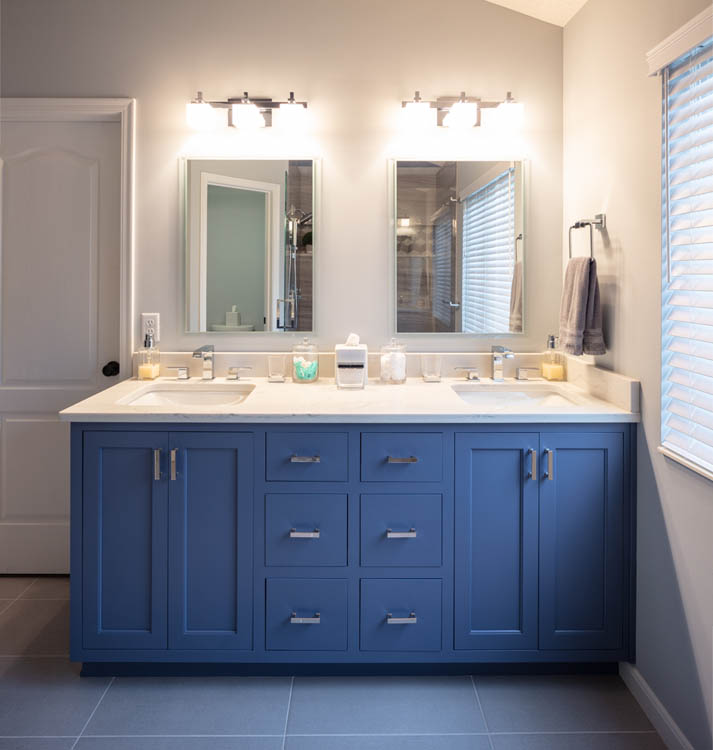In the vast world of cabinetry, there are two main categories of cabinet finishes; stained and painted. Both can be modified by adding a glaze to the mixture. You can even go as far as adding some distressing and aging, to make those cabinets look like they have been in your home for 100 years.
Stained Finishes
There are a couple of things to think about with a stained finish door. The major one being the wood species that it’s applied to. Stain on a maple door will look quite a bit different than it will on a cherry door.
Another thing to consider when it comes to wood species is how much grain will be visible. On a cherry door, there will be more grain in the wood than on a maple door.
On both stained and painted doors, the wood species also impacts the density of the cabinet. A maple door will be a little harder, and the cherry will be softer and more likely to get dings and chips in it.
An advantage with a stained door over a painted door is you’re not going to see the hairline fractures that happen in the joining of the wood over the years of use.
Painted Finishes
Aesthetically, paint dramatically changes the way a cabinet door looks. Most cabinet companies will have standard colors only, but if you move into the more custom lines, you can get any color you can dream up.
One downside to painted finishes is over time, with the use of the door and the wood expanding and contracting, you’re likely to see hairline fractures in the jointing. Another downside is if you chip a painted door, you’re more likely to see that chip than you would in a stained door finish. It will also be harder to repair without the repair being noticeable.
Glaze Finish on Stained Door
Glazing can be applied to any style door but has the most impact on doors with more ornate detailing. This is true because of how the grooves and details on the door catch the glaze and give it a more pronounced character.
There are two kinds of glazing application methods. One is a wet glaze, and the other is a dry glaze. A wet glaze is applied while the stain or paint is still wet. Because of this, the glaze will change the color of the stain or paint in some places.
A dry glaze is applied after the stain or paint is dry. Therefore the glaze doesn’t change the color of the stain or paint, so it will primarily show up where it gets hung up in the detailing of the door or drawer surface.
Distressed Finishes
Distressing is the process of sanding, scratching, and nicking up a door and/or drawer face, usually after it’s been painted or stained. This is an excellent option if you want your cabinets to look like they have been in your home for 100 years. There are endless options and styles for cabinet distressing, and the randomness of the process will ensure that your new cabinets are unique.
As you can see, the sky is the limit when it comes to cabinet door styles. This enormous variety is also just one of the reasons we’ve developed our detailed design-build process to keep you sane and on budget.


